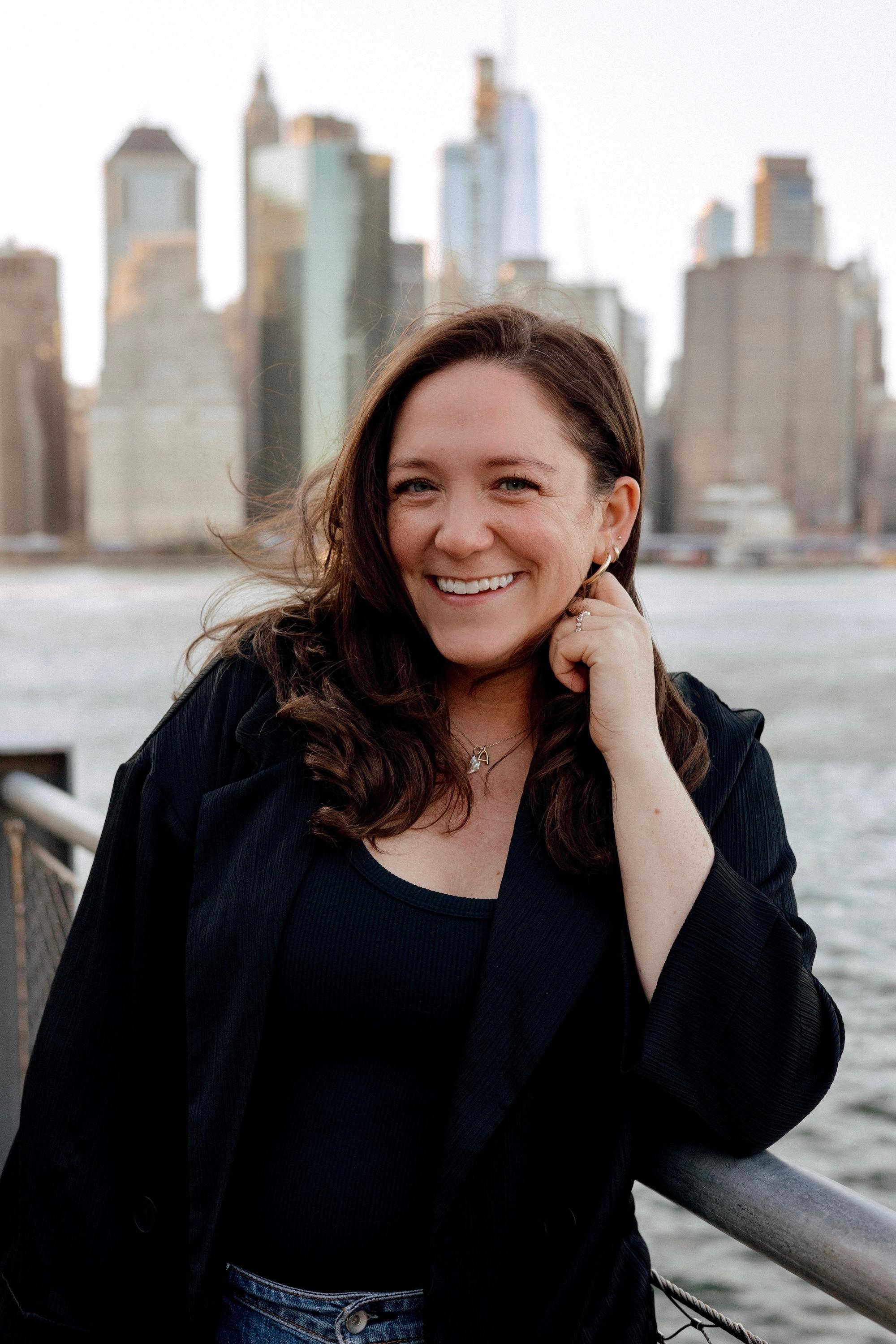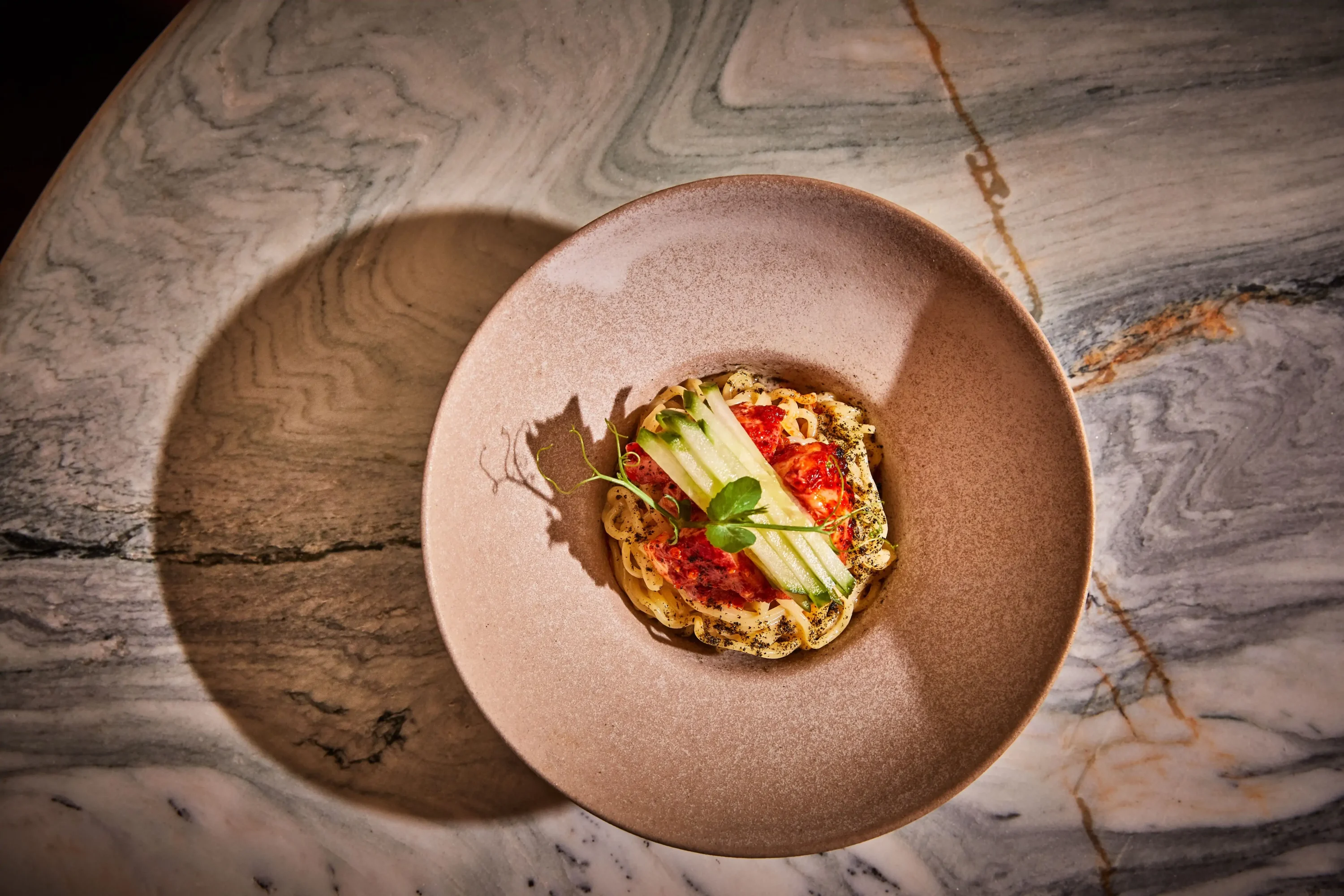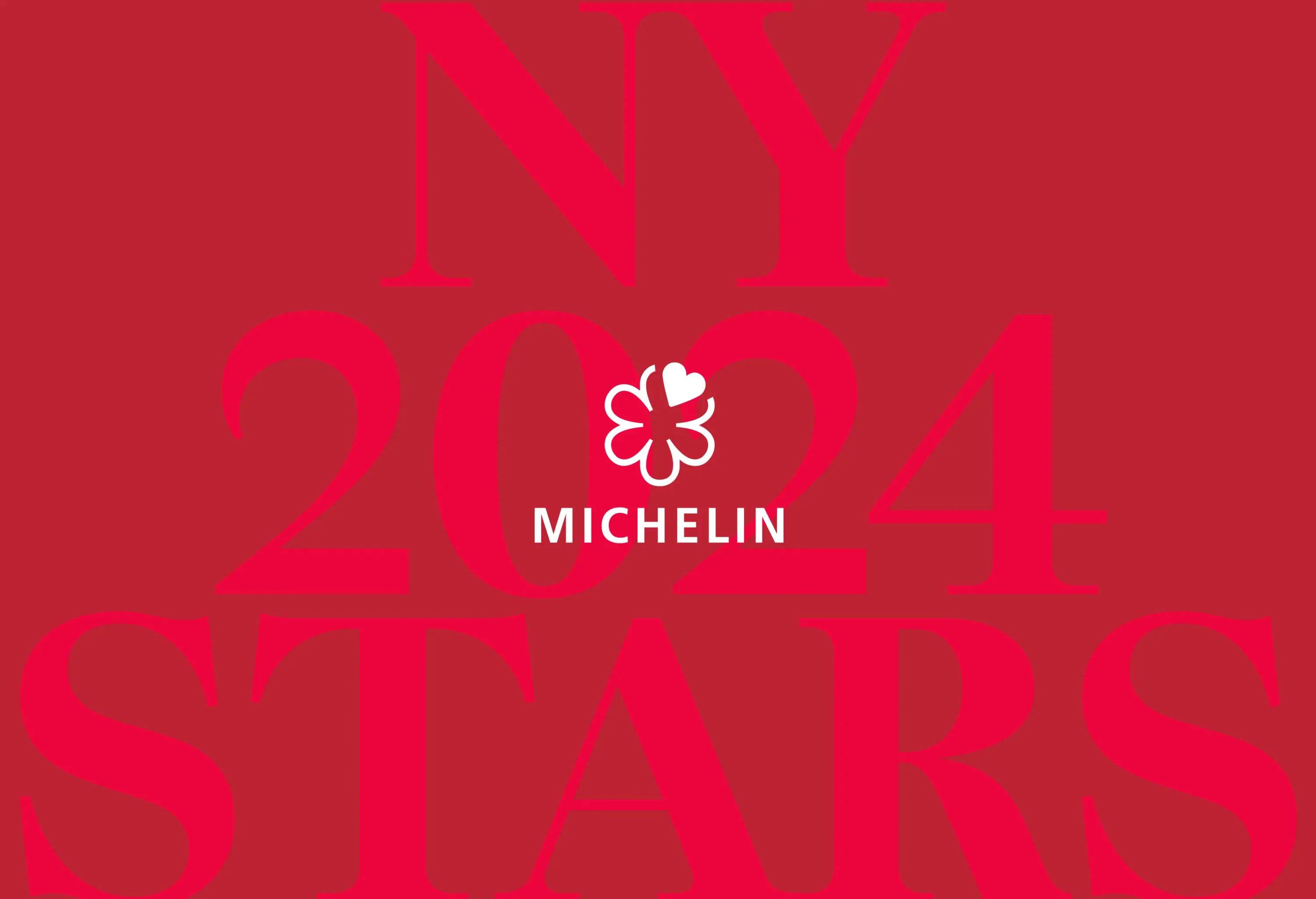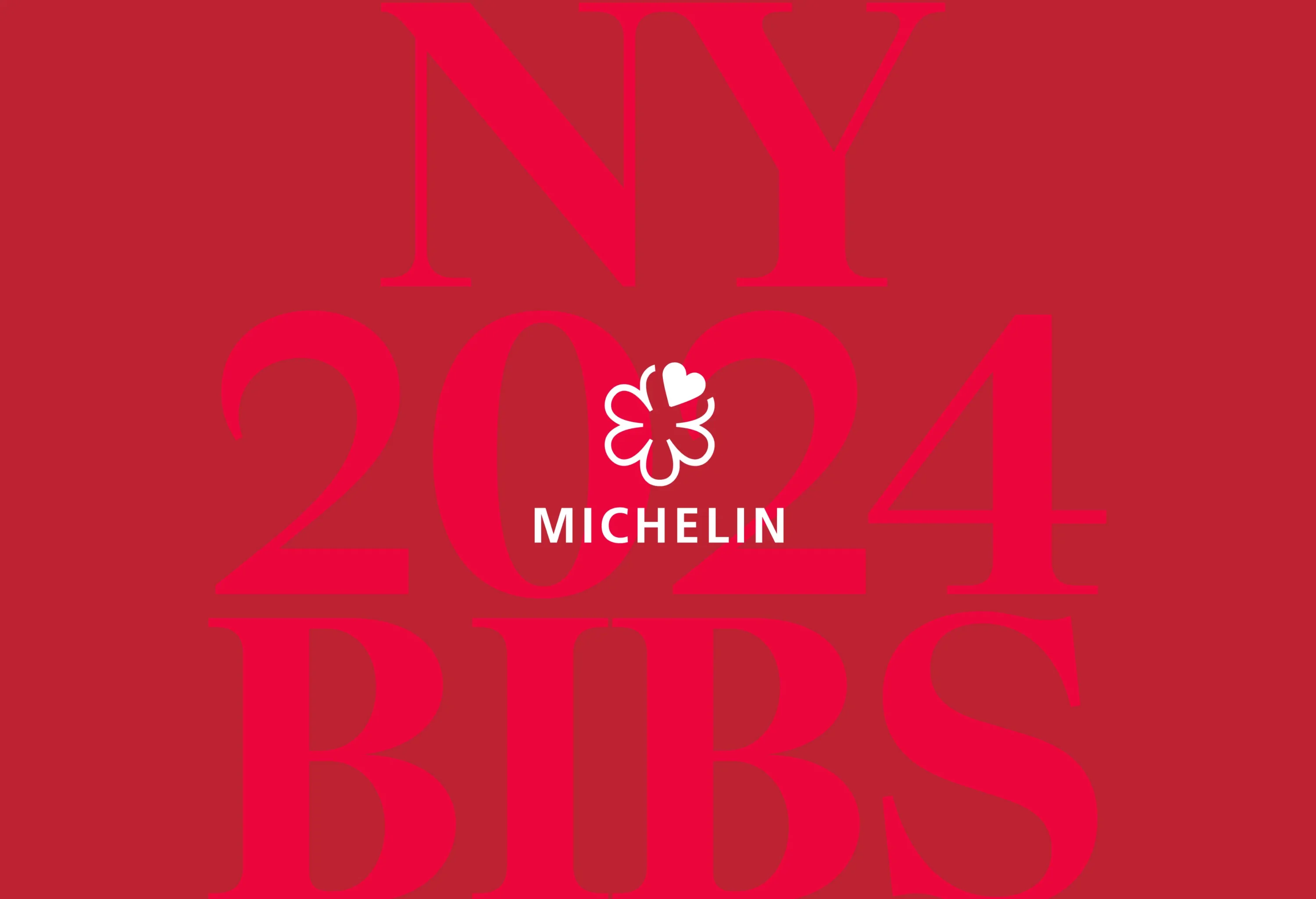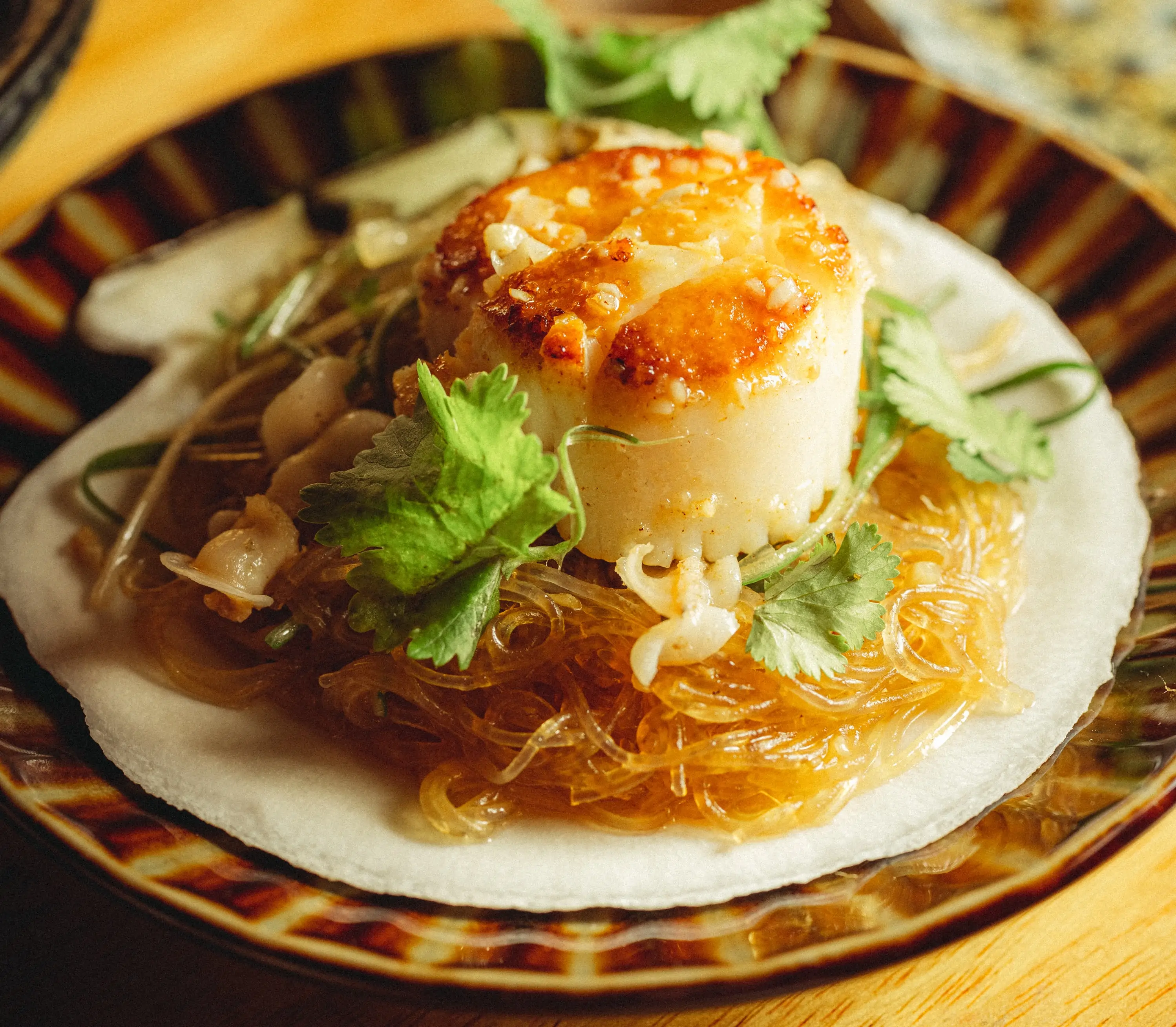Chef Brian Kim has established himself at the forefront of Korean fine dining with two acclaimed restaurants: OIJI MI and bōm in NYC. A James Beard semifinalist, Kim accomplished something exceedingly rare in the restaurant industry: opening two MICHELIN-Starred restaurants in just over a year.
The journey first began in 2015 when Kim opened Oiji, a beloved Korean restaurant in the East Village. He closed that spot in the spring of 2022 to open OIJI MI in May that same year—just five months later, the restaurant already had a MICHELIN Star. The counter-only bōm, tucked behind OIJI MI, followed in February 2023 and secured its own coveted Star later that year.
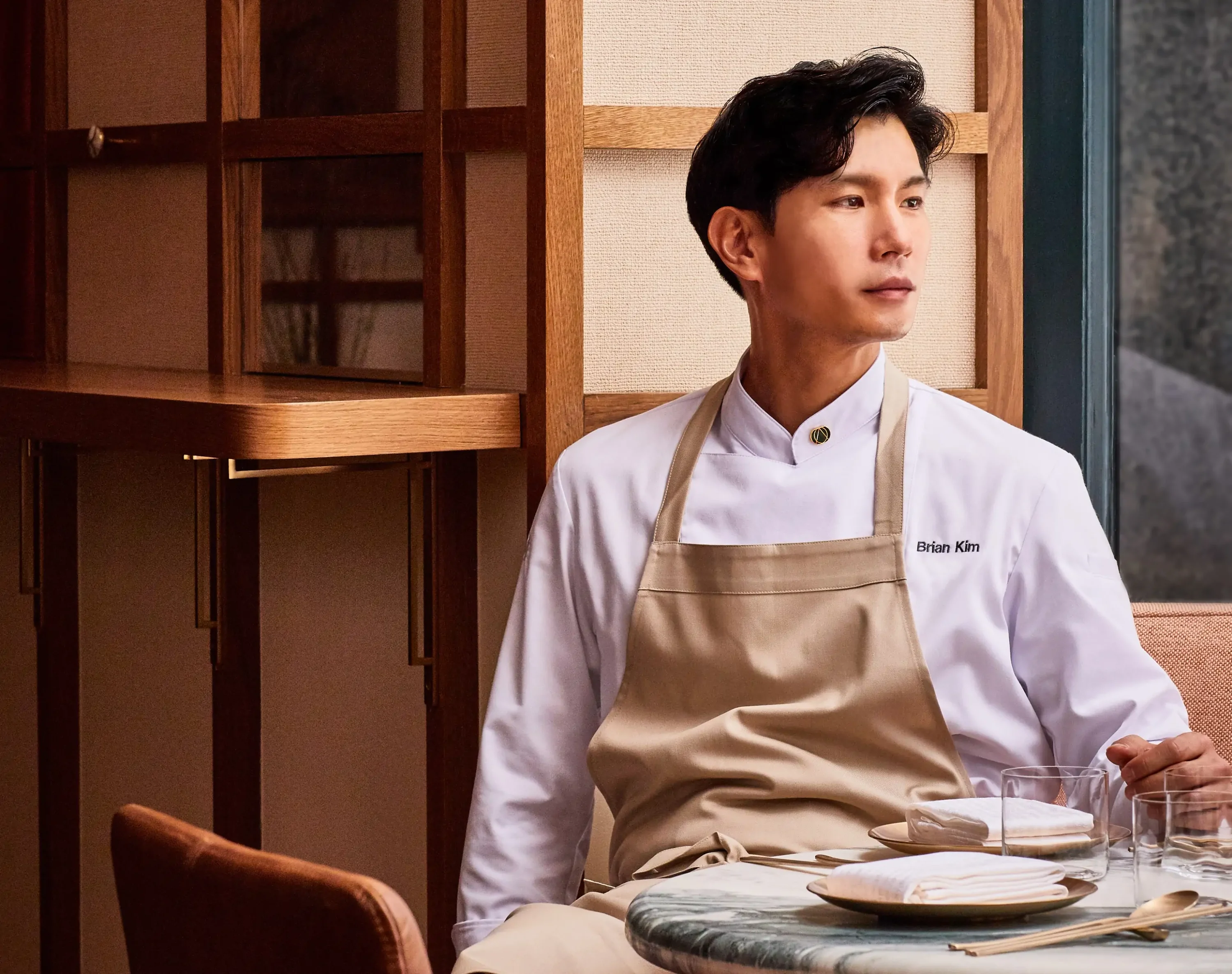
“Opening two different fine-dining restaurants within one year was extremely challenging,” Kim says, but the recognition affirms the exceptional quality of both spots. It’s a particularly exciting time to visit the restaurants as they’ve both settled into their unique identities. We caught up with Kim recently about the distinct tasting menus at both restaurants, the best seats to secure, and so much more.
Read on for all the must-know details on OIJI MI and bōm in NYC, and book them both on OpenTable.
This interview has been edited for length.
What do you think OIJI MI and bōm’s X factors are?
Brian Kim: Our menu focuses on balance, bridging tradition and innovation in Korean cuisine through the international dining lens of New York City. OIJI MI is more comforting but experimental at the same time. The menu itself appeals to a larger audience and the prix-fixe structure gives a wide range of choice.
At bōm, the room is a bit moodier, and the food is more austere. The format follows a traditional chef’s counter—with a total of 10 courses—showcasing Korean barbeque influences with three beef-centric courses.
What’s the one dish you’ll never remove from the menu?
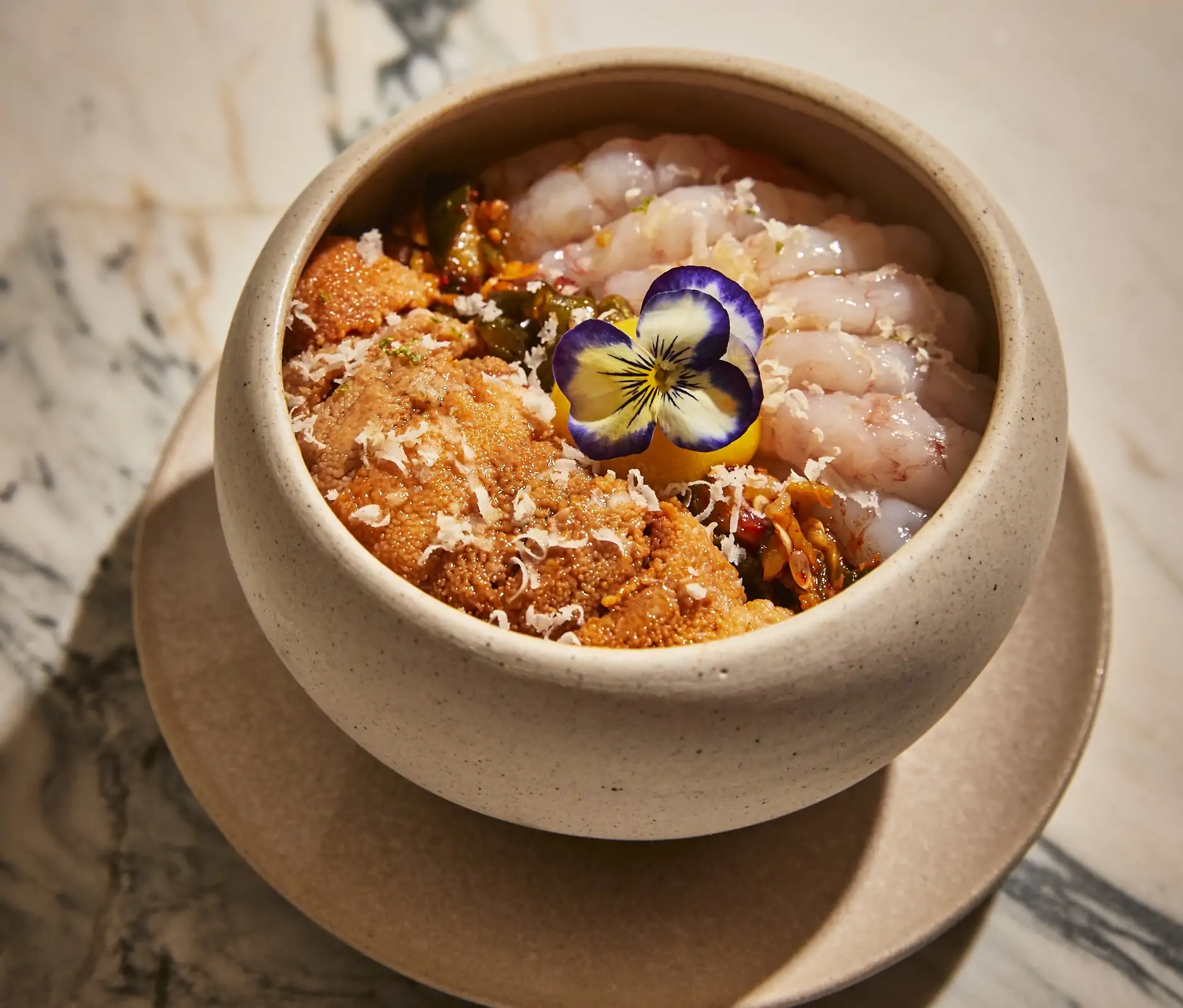
The Oiji bowl is our namesake dish at OIJI MI, which has been on the menu since I first opened Oiji in the East Village in 2015. Seasoned seaweed rice gets topped with pickled cucumber, Hokkaido sea urchin, salmon roe, and raw spot prawn. It was, and still is, one of the most popular menu items at OIJI MI.
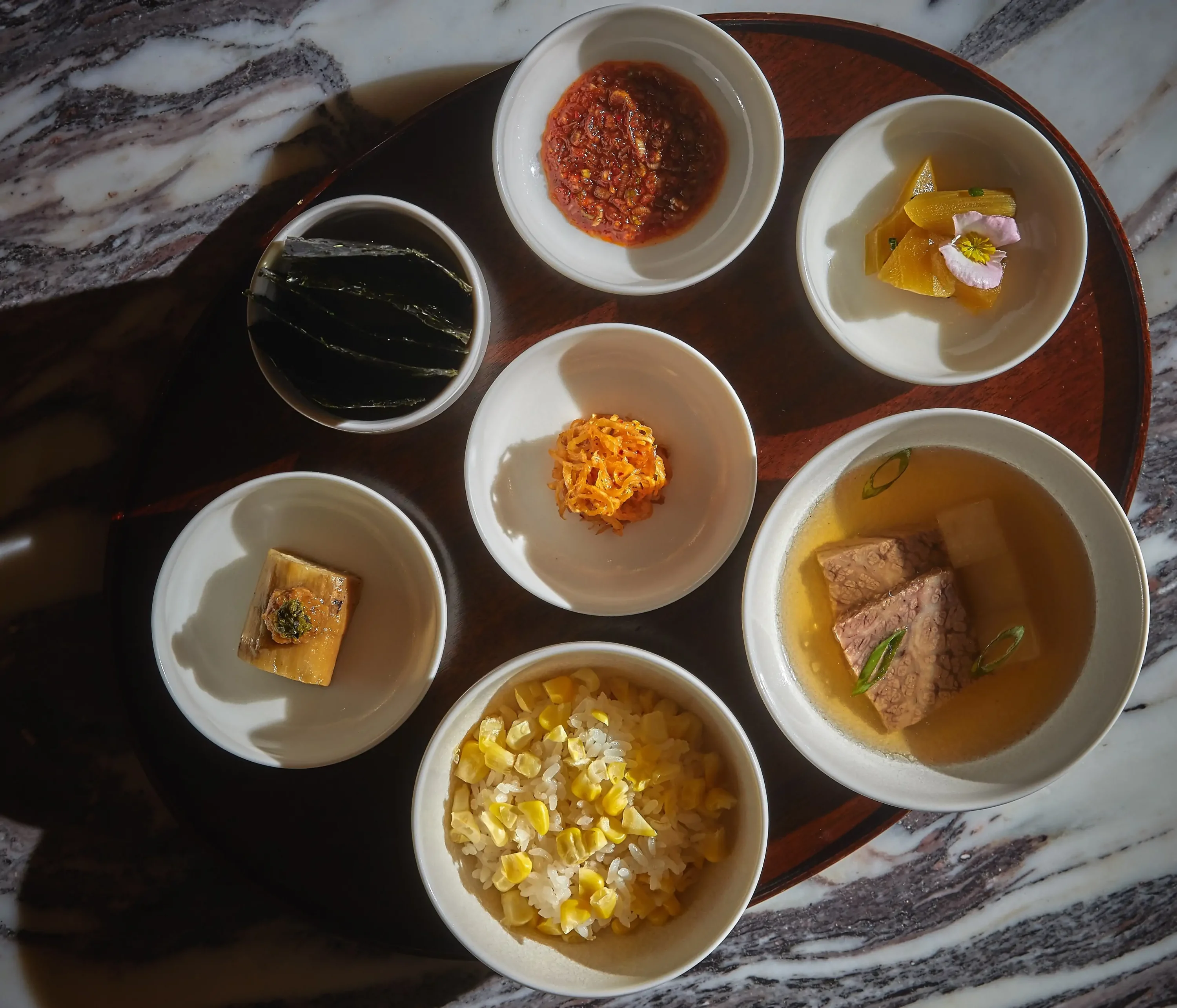
At bōm, it’s the hansang charim. In Korean, hansang charim roughly translates to ‘a well-prepared table of food.’ It’s often seen as a style of formal dining, where a meal culminates with a fully prepared table of food including rice, soup, and side dishes that everyone shares communally. The hansang charim [at bōm] as a course will never come off the menu, but the type of the rice, soup, and banchan will constantly change and evolve based on what is seasonally available.
What’s the underdog of the menu at either restaurant?
The King crab gyeranjjim at bōm. It’s a simple and comforting dish that is also deeply layered in flavor and luxurious in its ingredient sourcing. Gyeranjjim is a traditional soft-steamed egg, which we top with king crab cooked in a rich anchovy broth. It’s actually an interpretation of a recipe from my mother, which makes it particularly meaningful.
What is the hidden gem among the drinks at both restaurants?

Opt for the pairing [at both restaurants]—it’s the secret hack that lets our team showcase the full diversity and depth of the wine program.
Our cocktail list at OIJI MI is constantly evolving. With every visit, you’ll find something new, a fresh interpretation or an unexpected twist that reflects what’s in season right now.
Whether it’s a house-made fermentation or a drink built around seasonal produce, the non-alcoholic offerings at both OIJI MI and bōm are thoughtful, complex and satisfying—no afterthoughts here.
What are your favorite items at the restaurants that you want people to try at home?
Gamtae is a rare type of seaweed from Garorim Bay in South Korea. As of late, this particular seaweed has gotten very popular within the fine-dining circuit around the world. [It] appears as light green thin strands of seaweed that when dried and pressed into sheets, yields a savory, oceanic, mineral, and at times bitter complexity that is completely different from traditional gim or seaweed laver [nori].
Crab soy is also great. It’s a type of white soy brewed with snow and red crab, plus kelp, anchovy, mushroom, and aromatic vegetables. It’s briny, lightly sweet, and has deep umami.
Who’s your longest serving staff member at either restaurant?
One of our sommeliers started as a server in the East Village. He joined the team a few months after opening and has worked with us for the past 10 years.
What’s the best seat in the house at either restaurant?

In the center of OIJI MI, there are four booth tables that face out into the room. I would say the best seat has to be the booth that faces directly into the kitchen.
What’s the most memorable request you’ve received from a customer?
We’ve gotten many interesting requests, but maybe one of the most memorable was hosting a wedding dinner that served as a more intimate family reunion for the bride and groom’s families. They booked out the entire space for their celebration
When is the best time to find a reservation at both restaurants?
I would say both OIJI MI and bōm follow the same trends as the rest of New York City’s dining scene, but my favorite time to dine out is during the slower summer months or just after the holidays. The city is naturally a bit slower during those times of the year, and it’s much more comfortable to enjoy the totality of the restaurant experience when it’s not as crazy.
What’s your favorite award you’ve won?
My favorite award is earning our first MICHELIN Star in both restaurants. It’s an achievement on its own, but one that was particularly exciting and meaningful since we were able to do it with two individual concepts opening back-to-back and earning and maintaining a Star in the first and second year. In addition to being a great honor to be recognized, it’s an affirmation and acknowledgement of the work that goes into both spaces.
Alexis Benveniste is a big fan of Persian food, sushi, and finding hidden gems she can recommend to her friends. Her work has appeared in The New York Times, The MICHELIN Guide, Bloomberg, and New York Magazine. You can find her on Instagram at @apbenven.
